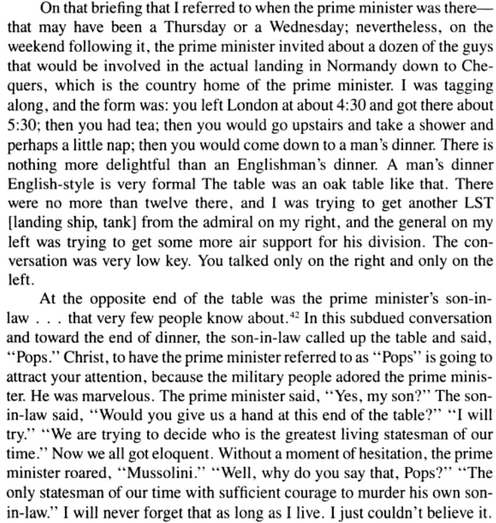A US judge in southern California tried to rule that “freedom of speech” protects “fight clubs” meant to spread across the U.S. even when they clearly exist only to physically terrorize people.
On multiple occasions, [southern California white supremacist street-fighting gang] members showed up at protests in California and at the violent Unite the Right rally in Charlottesville with their faces uncovered and brawled with leftists, which left Rundo and others open to criminal prosecution. With charges looming against Rundo and three other members of RAM in 2018, the young white supremacist fled to Central America, where he was later arrested by the FBI, and brought back to the U.S. A judge dismissed the charges the following year, concluding that their activities were protected by the First Amendment.
Street-fighting white gangs, training internationally with terror groups, as a form of protected free speech?
What?
That judge was looking at details like this.
The March 2017 Huntington Beach rally, to “Make America Great Again,” became especially violent. Prosecutors presented pictures showing Laube repeatedly punching a journalist in the face.
From this he concluded “an essential function of free speech is to invite dispute” therefore he wouldn’t jail the Nazi throwing punches in America.
A journalist is being punched in the face and judge Carney thinks that he is dealing with a speech issue where the physical attacker needs some kind of protection.
In fact, Carney makes a point to say he’s the kind of person who disagrees with the Nazi who might “throw punches in the name of teaching antifa some lesson”.
Nice try. Think about that phrasing for a long minute. An American judge officially wrote in his opinion that a being punched in the face by a Nazi is teaching “some lesson”. What lesson is that?
Carney had only in June 2020 been assigned the chief judge spot in the Central District of California (counties of Los Angeles, Orange, Riverside, San Bernardino, Ventura, Santa Barbara and San Luis Obispo — nearly 20 million people, about half the state’s population).
Judge Carney stepped down as chief a month later, when his subtle style of racism was very visibly outed.
The announcement stems from comments Carney made a during a webinar sponsored by the Federal Bar Association on June 9, 2020. Carney said he used the term “street smart” to describe Gray. “This term was one of many words I used to recognize and compliment Ms. Gray…”
Ok, let’s be careful here. Context matters A LOT in this phrase, which is why it is racist.
“Street smart” indicates survival in dangerous situations. Urban dictionary even offers this rather blatant example:
…one who is knowledgible [sic] at some art of illegal activity. understands the code and conduct held within a certain crime family/ies. the term came from the common street hoodlum who knows how to succeed in areas that don’t necessaryly [sic] need a formal education to get ahead in life. for instance a group(crew) of criminals enterprise at trafficing and selling narcotics
Can you see why context of a white judge calling someone in his staff “street smart” is problematic (implying lack of professionalism/education and crime boss status under systemic oppression)… not to mention trying to then argue it was meant to be a compliment!?
His high-brow ivy-league style of racism in fact targeted Gray, the “first black woman to be named clerk of the U.S. District Court for the Central District of California”.
It was Carney expressing his contempt, where contempt is the root of racism.
In his apology to her, this Harvard-educated genius in the seat of Chief Judgeship dug himself a hole so big it erupted like a volcano.
Carney compounded his problems when he spoke with Gray in a later conversation about calls for his resignation as chief judge, according to his email, sent to court staff members and judges. “In a moment of anger and frustration, I said to Ms. Gray that the people criticizing me were equating my well-intended use of the term ‘street-smart’ with the reprehensible conduct of a police officer putting his knee on a person’s neck,” Carney said. Carney said the statement about his critics was “an insensitive and graphic overreaction to the criticism that was leveled against me. I never should have made the comparison.”
Think about Carney telling America to tolerate angry racist mob violence because he thinks of them as just people trying to express themselves. Got that logic?
He tried to lay down a line that white male angry violence is just something Americans have to accept.
Then his saccharin racism is called out and in response he whines he doesn’t deserve anti-racism scrutiny, claiming his “moment of anger” and contempt towards critics explains his actions.
See why he tried to set loose the angry racist white mobs punching journalists?
What matters in this context is twofold:
1) There was a giant smack-down of that absurd Carney decision. The courts rejected his love of fascism, reminding America how awful it is for a racist judge to fraudulently attempt to frame white mob physical violence as protected speech.
…it made no sense “to assert that the government and its citizens cannot act, but must sit quietly and wait until they are actually physically injured or have had their property destroyed.”
2) White mob physical violence has been a long-time problem in America and is again an increasing threat, not least of all because of schools and courts passing upward deeply flawed thinkers like Carney. Harvard has a long history of sanctioning white mob violence, as well as graduating obvious racists (and some recent countermeasures).




